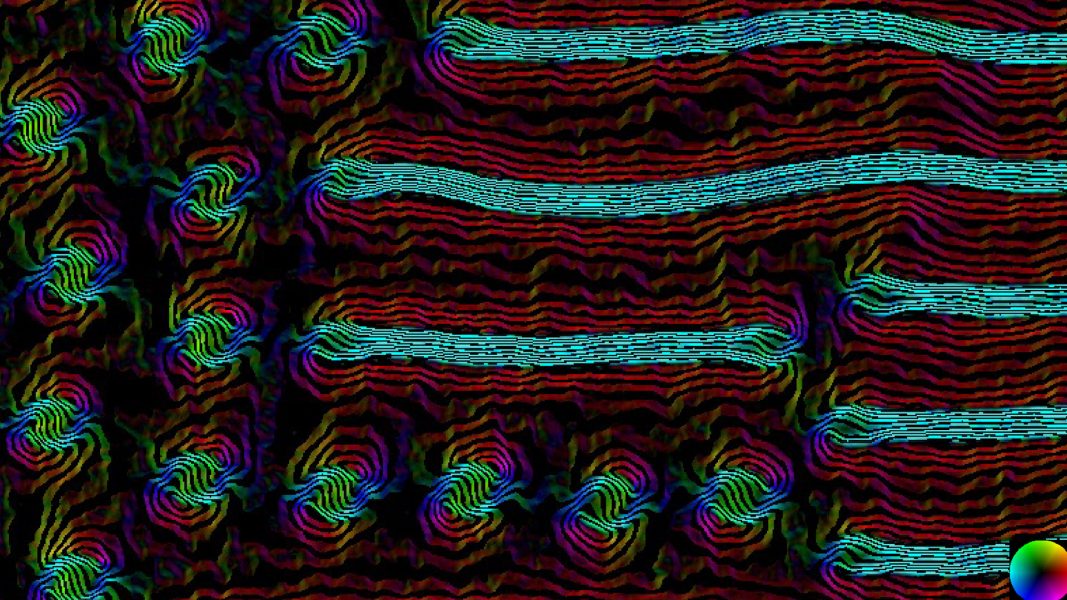Electronics rely on the electrical charge of an electron for information processing. Carrying information in both the electron charge and spin could lead to devices with enhanced functionality, a field known as “spintronics.”
In Advanced Materials, Dr. James C. Loudon from the University of Cambridge and co-workers investigate biskyrmions, quasiparticles of interest for spintronics applications, which have been reported to exist in manganese–nickel–gallium (MnNiGa).
When an out-of-plane magnetic field is applied to certain magnetic materials, domains with an antiparallel magnetization shrink until they break into roughly circular magnetic domains known as magnetic bubbles, sometimes called skyrmions.
A MnNiGa sample was heated above its Curie temperature and cooled back to room temperature in the presence of a sweeping magnetic field, producing a dense array of bubbles. X-ray holograms showed no indication of magnetic features with the double core that would be expected from a biskyrmion.
Electron microscopy images and micromagnetic simulations further confirmed the presence of only conventional type-I and II bubbles—not biskyrmions. This research suggests that images previously identified as biskyrmions are in fact type-II bubbles viewed at an angle to their axes.
To find out more about magnetic bubbles and skyrmions, please visit the Advanced Materials homepage.

















